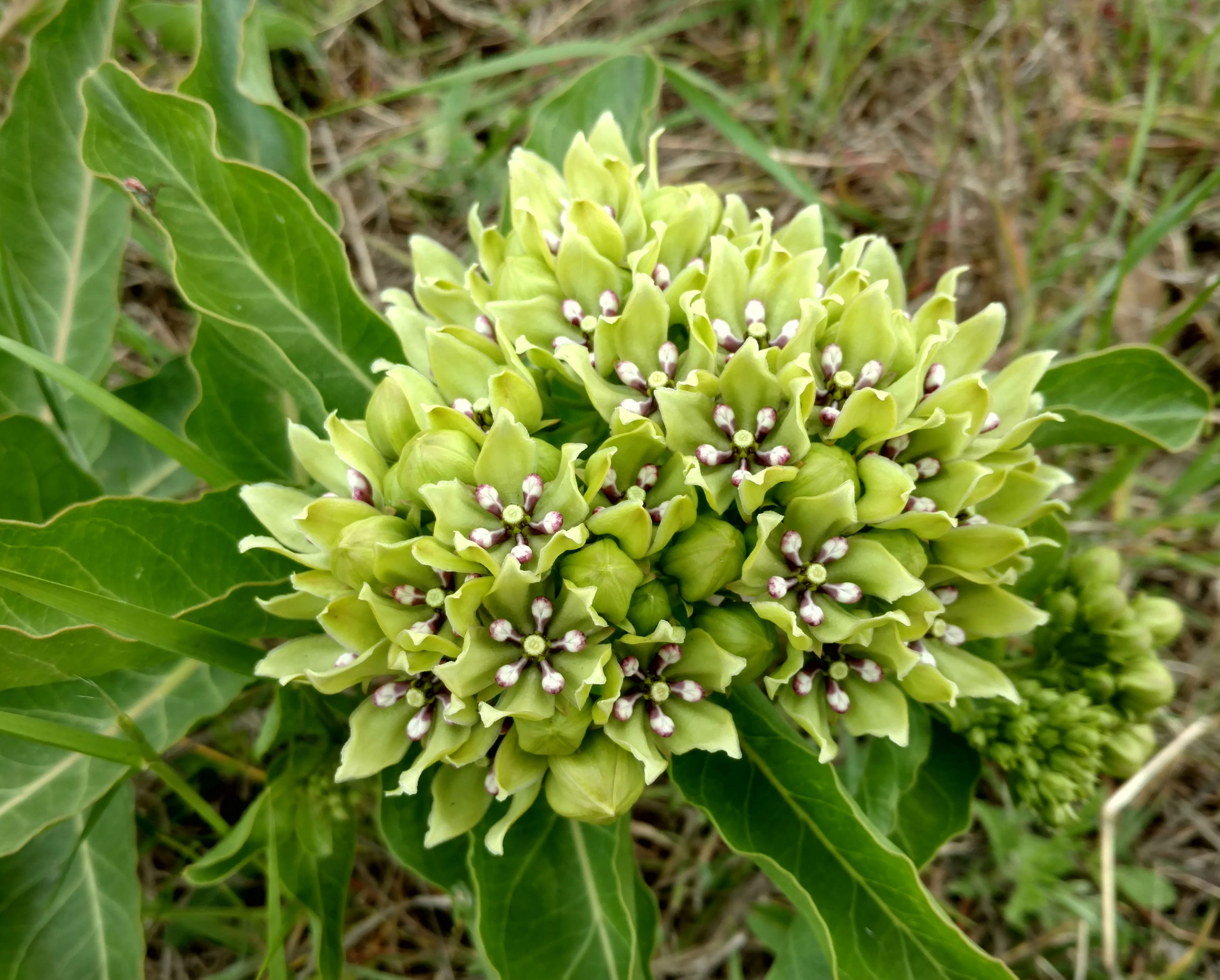Patience, trust and no fuss — these are just a few of our recommendations to help your milkweed flourish.
Many of us have heard about the plight of the monarch butterfly and we’ve discussed the benefits of using local milkweed species.
But while some gardeners seem to have no trouble at all growing milkweed in their landscapes, there are many others who find it confusing, frustrating, or downright impossible. Admittedly, I’ve never had any difficulty getting milkweed established, so it’s always a little surprising to me that many struggle with what, in my experience, is a group of invincible plants.
So, I’ve drawn up a list of tips and tricks for those who don’t know where to start (or restart, as the case may be) with milkweed.
 Pick the right species for your soil and conditions. This is probably the most important factor. Antelope horns might be the prettiest native milkweed, but they won’t grow very well — or at all — in the deep clay soils of Central Bexar County. Green milkweed may be better suited; it’s native to Blackland Prairie soil and doesn’t mind a little extra moisture (it’s also a great addition to a rain garden). Butterfly milkweed has similar requirements. Texas milkweed is also tolerant of clay soils, but needs shade, especially from the afternoon sun. And for sandy soils in far south Bexar County, whorled milkweed is more appropriate. Zizotes milkweed may not be as flashy as the species above, but it is tolerant of all local soil types and is generally the favorite of monarchs in my own yard. Be wary of various other “near native” species like aquatic, showy and swamp milkweed; these are harder to grow in San Antonio and may set you up for disappointment.
Pick the right species for your soil and conditions. This is probably the most important factor. Antelope horns might be the prettiest native milkweed, but they won’t grow very well — or at all — in the deep clay soils of Central Bexar County. Green milkweed may be better suited; it’s native to Blackland Prairie soil and doesn’t mind a little extra moisture (it’s also a great addition to a rain garden). Butterfly milkweed has similar requirements. Texas milkweed is also tolerant of clay soils, but needs shade, especially from the afternoon sun. And for sandy soils in far south Bexar County, whorled milkweed is more appropriate. Zizotes milkweed may not be as flashy as the species above, but it is tolerant of all local soil types and is generally the favorite of monarchs in my own yard. Be wary of various other “near native” species like aquatic, showy and swamp milkweed; these are harder to grow in San Antonio and may set you up for disappointment.- Don’t use mulch. I know it sounds wrong, but I have the best luck with milkweeds when I don’t plant them in a mulched garden bed. (Mulch is used to reduce the growth of weeds, after all.) Instead, it may be better to mimic the natural habitat of milkweed and just plant them alongside other plants like native grasses or groundcovers such as snakeherb or frogfruit. The one exception that does well in a mulched bed is Texas milkweed. But in the wild this species grows in dead leaves under the shade of Hill Country live oaks and junipers, so this make sense. Surrounding milkweed with other plants is important for monarch caterpillars too. They like to crawl off the plant they’re eating to rest and digest. The leaves of neighboring plants provide a nice shady, sheltered resting place.
- Expect them to disappear. Your milkweeds will “die” to the ground periodically throughout the growing season. Sometimes this is caused by munching caterpillars or insects, but sometimes they just drop leaves and shrivel for no discernable reason. This is not necessarily a cause for concern. Your new milkweed is not dead, just temporarily dormant. In fact, when they resprout they usually come back larger. Their tendency to go dormant is just another reason to plant milkweeds next to other plants so you have an obvious void in the landscape when they decide to go underground.
- Group them together. If you really want to attract egg-laying monarch butterflies in the spring, make sure to group milkweeds together. Clustering them in groups will make them easier to find and present fuller foliage. Planting in groups also helps you keep track of the milkweeds: with five together, there’s a better chance that at least one will be visible above ground.
- Transplant with care. When taking milkweeds from their nursery pot, remove the potting soil as intact as possible to avoid damaging the roots. You’ll want to pack in the soil snuggly around your new plant, without large air gaps — air gaps hamper establishment. If you’re digging in clay, break up any large chunks of excavated soil before packing it back into place. Once in the ground, provide a thorough watering in.
- Don’t overwater. Watering milkweed to get them established can be tricky. You’re more likely to over-water than under-water them. When you do provide water, water deeply. If you’re lucky and get frequent enough rainfall, you might not need to water at all. But if your milkweeds start losing their leaves, definitely stop watering and let them recover on their own.
To grow milkweed successfully, you’ll need both patience and trust. Patience is essential since native milkweeds definitely move at their own pace. But you’ll also need to trust that wild milkweed species can and do take care of themselves. Meddling or worrying can do more harm than good.
I’ve heard that native milkweeds resist cultivation, but I disagree. Once you accept that typical cultivation practices can hinder milkweed growth, it’s easy to see why people think they’re so difficult. They are weeds, after all.
When you have the right species for your soil and exposure, they really require nothing from you in order to thrive.


